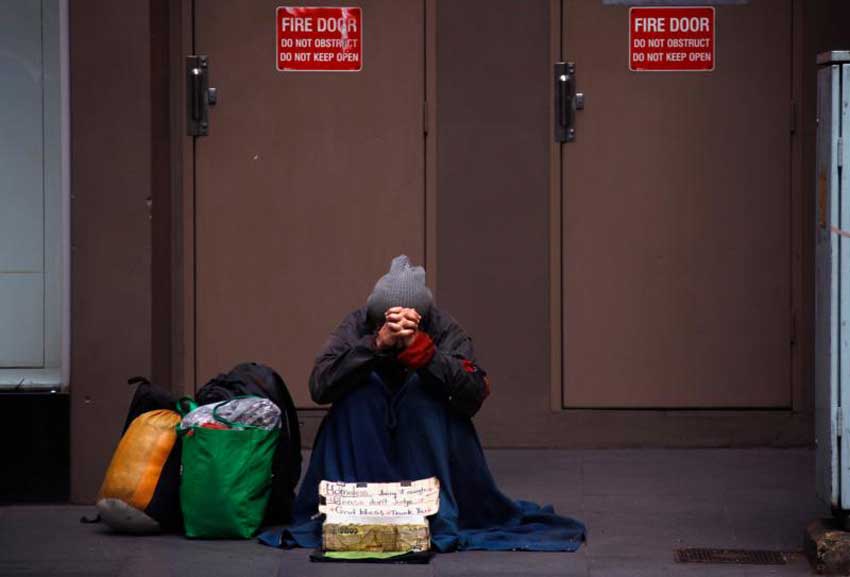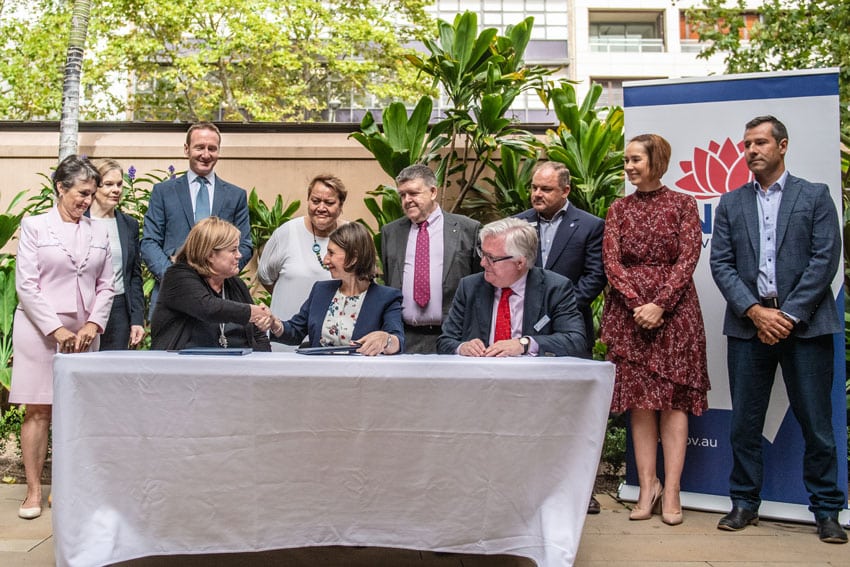
A seemingly endemic problem is solvable – if only we have the will to do something serious to solve it, experts tell business leaders
Welfare charities say the extended lockdowns from the COVID-19 pandemic have hurt some of Sydney’s most disadvantaged, especially a group often considered “invisible” in the homelessness statistics: women with children fleeing domestic and family violence.
The St Vincent De Paul Society says women over the age of 55 are the fastest growing group impacted by homelessness with a 33 percent increase in numbers in the past year alone.
“Most of the women I speak to who come to us, they’ve come to us because they have been sleeping in their car after escaping a very dangerous situation for them and their children.”
The Executive Director of Vinnies Services, Ms Niamh Mannion, said many of these women are hidden from public view, often finding themselves initially couch-surfing to escape an abusive partner and then drifting into homelessness.
“Most of the women I speak to who come to us, they’ve come to us because they have been sleeping in their car after escaping a very dangerous situation for them and their children”, explained Ms Mannion at a luncheon on the topic of homelessness, hosted by the Sydney Catholic Business Network.
“They usually come into contact with us through a St Vincent De Paul shop because they see it as a welcoming, safe place. They come in and speak to one of our volunteers and we’re then in a good position to direct them to the right place for help”.

“In the longer-term, that translates into helping these women achieve a greater sense of stability in their lives, marked by employment opportunities to help them achieve financial independence and build up a support network around them”.
Ms Mannion was one of the panel members at a Sydney Catholic Business Network Luncheon on 11 February on the topic “Street Sleeping is Solvable”.
The panel members shared with business leaders how Sydney’s Catholic Church and agencies started one of the world’s largest collaborative impact projects, aimed at ending street homelessness across NSW.
“Archbishop Anthony Fisher OP and Auxiliary Bishop Terry Brady questioned whether a lot more could be done in Sydney to provide support to the homeless.”
The End Street Sleeping Collaboration was first conceived in August 2017 when a group of homeless people sleeping rough in tents around Martin Place in Sydney’s CBD were asked by government authorities to move on.
Archbishop Anthony Fisher OP and Auxiliary Bishop Terry Brady questioned whether a lot more could be done in Sydney to provide support to the homeless.
They recognised that they could never even start to address this pressing social problem on their own and so they brought together Catholic social and health organisations including St Vincent De Paul, St Vincent’s Health, Catholic Healthcare, the Australian Catholic University and the Mercy Foundation to form a taskforce to come up with a plan to end homelessness in Sydney.

Over four years later and the End Street Sleeping Collaboration has already achieved the first major target it set itself: to reduce street sleeping in the Sydney CBD by 25 percent by 2020 and they are on track to reach their next target of a 50 percent reduction in homelessness across NSW by 2025.
The CEO of the End Street Sleeping Collaboration, Graham West said one of the strengths of the current effort was the buy-in from the NSW Government which made a firm commitment to the homelessness targets under the leadership of former Premier Gladys Berejiklian.
Mr West said Catholic social teaching with its emphasis upon celebrating the dignity of each person, is central to the Collaboration.
“Through this data, we know that around 60 percent of this group have a mental health condition and about half of them have substance abuse issues.”
The organisation has collected personal stories from 1639 rough sleepers so far in NSW, including their personal name and details on their health condition and how long they have found themselves homeless.
“Through this data, we know that around 60 percent of this group have a mental health condition and about half of them have substance abuse issues”, explained Matthew Kearney, the Director of Mission with the St Vincent’s Health Network.
“We also know that around 40 percent of the group are what could be considered chronically homeless and they’re the people we really need to focus our efforts at supporting”.

“They’re essentially on a journey into and out of homelessness”.
The St Vincent De Paul Society’s Niamh Mannion said the approach being taken by her agency is focused firstly on prevention, by working closely with those who are on the verge of homelessness, including the couch-surfers to prevent them falling into chronic homelessness.
She said for those who are already homeless, the focus needs to be on supporting them into permanent housing, especially through affordable and social housing.
The Co- Chair of the End Street Sleeping Collaboration and outgoing CEO of CatholicCare, Mr Mark Phillips, said homelessness is a much broader issue than simply moving those impacted off the streets into housing.
“As we’ve seen from the experience in the U-S, if all you do is house the current homeless, in around three years, you’ll probably have as many people back on the streets in that time.”
“It’s about also ensuring they have a sense of belonging and a sense of community there, so they feel supported and don’t risk drifting back onto the streets again”, Mr Phillips explained.
“As we’ve seen from the experience in the U-S, if all you do is house the current homeless, in around three years, you’ll probably have as many people back on the streets in that time. So you can’t house your way out of homelessness”.
If you’re interested in joining the Sydney Catholic Business Network, you can find more information online here.
